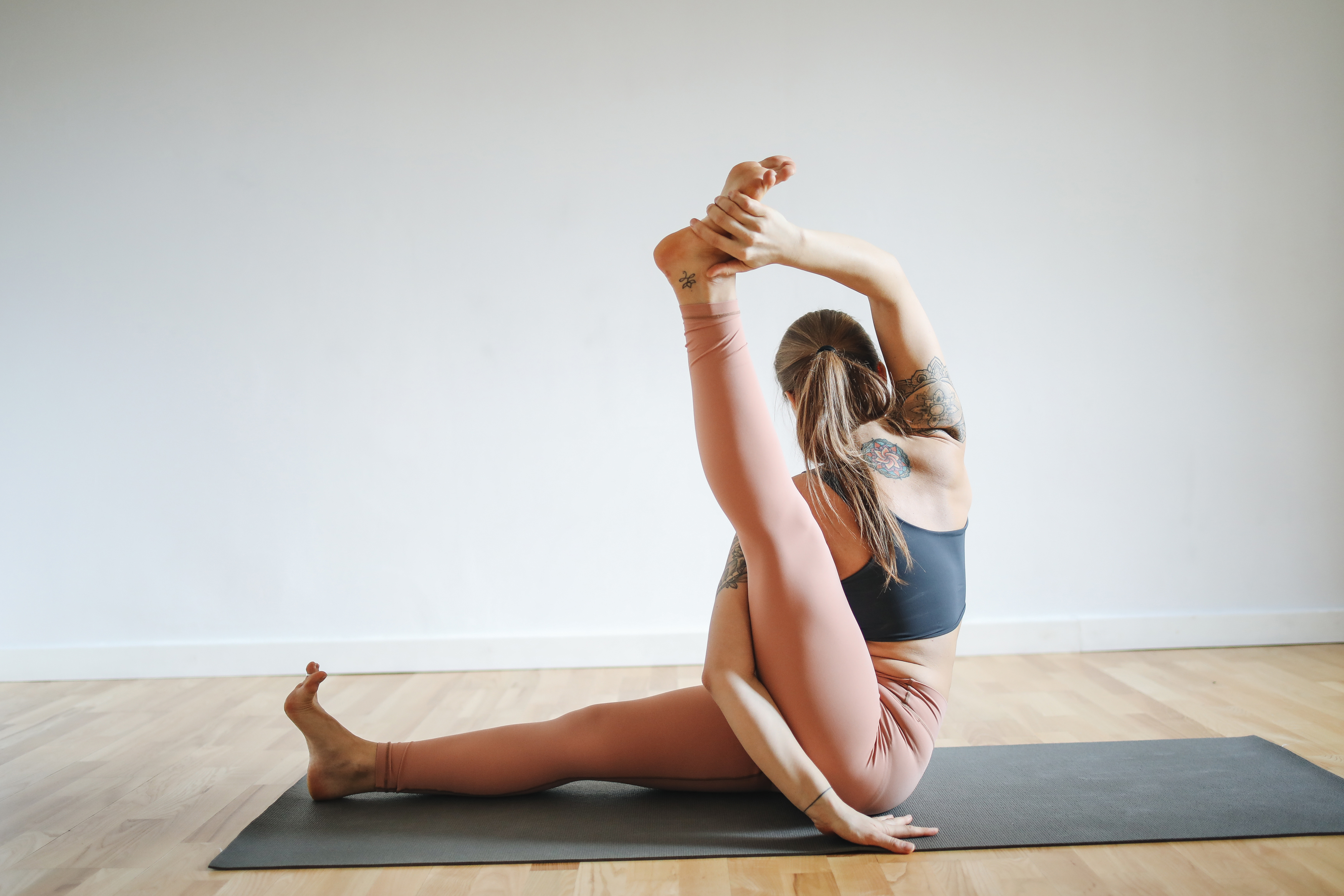Yoga Journal influencer and expert yoga teacher Laura Burkhart pens down 10 questions for every yoga practitioner. Meet Laura in Singapore on April 29 and discuss your answers, and also get fine tips about arm balancing poses.

1. Does your practice balance the rest of your life?
If you are already performing high-intensity activities such as running, swimming, cycling, etc., I recommend choosing an asana practice that is less intense in nature, such as Iyengar or restorative practice. That way you can reap the benefits of yoga and avoid overusing your joints, tendons, and muscles. On the flipside, if you lead a sedentary life, then a vinyasa practice might bring your body into balance.
2. Do you practice too much?
As practitioners get serious about asana, some feel the need to do an intense 90-plus-minute practice, 5–7 days a week. Many yogis try to keep up with this “expectation” because they believe it’s what a “true yogi” would do. Unfortunately, for many of us, too intense of a practice too often can also lead to overuse of joints and unnecessary repetitive stress on tendons and muscle fibers. I personally don’t recommend doing long, high-intensity yoga practices more than 3–4 days a week.
3. What motivates you to practice?
Your teacher? Your ego? Social media? Your body? Some of us want to “master” complex asana to win favor and praise from our teachers, fellow practitioners, or social media followers.
This need for approval and recognition can be exacerbated when teachers encourage students to push deeper into poses, or praise students who have the ability to get into difficult asana, rather than applauding students with mastery of alignment and stability. If you always want to go deeper or make a pose “more advanced,” where is that coming from and why?
4. Does what you’re doing hurt?
If it hurts, don’t do it. Period. Regardless of whether your teacher is pushing you to go further, or you see other people going deeper.
We come from culture of “no pain, no gain” and pushing past our limits. Hard work, sacrifice, and going the extra mile get us good grades, promotions, and wins in sports. While this mindset can lead to advancement, it can also lead to imbalance. Your internal drive may be high, but your anatomical structure can only take so much. Too much pushing can lead to impingement, strain, and tears in the joints, tendons, and muscles. Honor your body’s limitations.
If you have existing injuries, tell your teacher. Your teacher should be able to show you how to modify poses, which poses to avoid, and maybe even guide you toward poses to heal what ails you. You might also need to back off your intensity with the practice to avoid making the injury worse.
5. Are you protecting your shoulders?
In Chaturanga, do your shoulders dip below the level of your elbows? Do you jump back every time you vinyasa? Do you land in Chaturanga or Plank? I recommend limiting jumpbacks and landing in Chaturanga when you do. For most of your vinyasas, I recommend lowering your knees to your mat or skipping Chaturanga all together to prevent repetitive stress injuries, such as labrum tears and rotator cuff issues. If you have a pre-existing shoulder issue, avoid Chaturanga and arm balances.
6. Are you protecting your hips?
Are you listening to your body? In poses where you externally rotate your legs and/or go into deep hip flexion (like Compass Pose, Tittibhasana, Visvamitrasana, Krounchasana), observe how far your body naturally wants to go without pushing further. Also consider balancing out hip flexibility with abduction, adduction, and gluteal strength training.
7. Are you protecting your knees?
A few pointers: In standing poses, don’t let your bent knee go past your ankle. In standing poses that require external rotation like Warrior II, rotate the front leg from the hip socket rather than the front foot. Be sure your body is well warmed up for poses that require deep external rotation with knee flexion like Full Lotus Pose before attempting them. If you already have issues with your knees, avoid Pigeon Pose and practice Thread the Needle on your back instead.
8. Are you protecting your lower back?
Do you warm up before going into deep twists? Recently, many senior teachers and physical therapists alike have begun recommending not squaring your hips in twists, especially if you’re hypermobile, to protect the lower back and SI joints. If you already have lower back issues or have tight hip and hamstrings, be careful with forward bends, particularly seated forward bends. In seated forward bends elevate yourself on a block or folded blanket to avoid rounding your lower back.
9. Are you working on mastering alignment and increasing stability?
I view an advanced student as one who knows how to align their body and use appropriate props when needed. Better alignment will also help you avoid injuries.
10. Can you be happy with where you are?
Be in the present moment; focus on what you can do now, not what you used to do, or what you think you should be doing a month from now. Your practice will change over the years. Don’t get too attached to the current season. This doesn’t mean you can’t have goals, but be realistic and see where your goals are coming from, and if it honors your body.
Shift your goals from intensity, strength, flexibility, and complex asana to digging below the physical. Our yoga culture has drifted away from the purpose of asana. The practice was originally intended to prepare the mind and body for meditation, not a career as a contortionist.
Laura Burkhart is a San Francisco based yoga teacher. You can learn more about her at http://www.lauraburkhartyoga.com
This article was first published in the print edition of Yoga Journal Singapore, which is now Yoga Journal Singapore.






